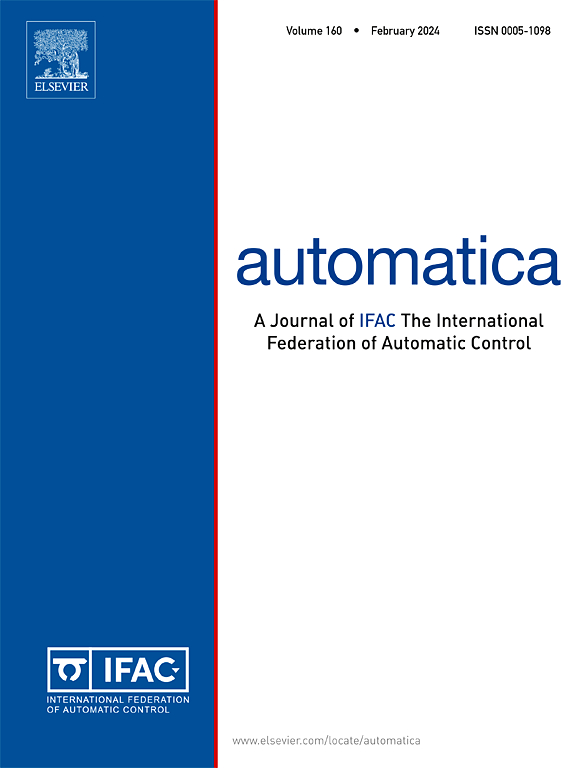Nonuniqueness and convergence to equivalent solutions in observer-based inverse reinforcement learning
IF 4.8
2区 计算机科学
Q1 AUTOMATION & CONTROL SYSTEMS
引用次数: 0
Abstract
A key challenge in solving the deterministic inverse reinforcement learning (IRL) problem online and in real-time is the existence of multiple solutions. Nonuniqueness necessitates the study of the notion of equivalent solutions, i.e., solutions that result in a different cost functional but same feedback matrix. While offline algorithms that result in convergence to equivalent solutions have been developed in the literature, online, real-time techniques that address nonuniqueness are not available. In this paper, a regularized history stack observer that converges to approximately equivalent solutions of the IRL problem is developed. Novel data-richness conditions are developed to facilitate the analysis and simulation results are provided to demonstrate the effectiveness of the developed technique.
基于观测器的逆强化学习中的非唯一性和向等效解的收敛性
在线实时解决确定性反强化学习(IRL)问题的一个关键挑战是存在多个解决方案。非唯一性要求研究等效解的概念,即成本函数不同但反馈矩阵相同的解。虽然文献中已经开发出了收敛到等效解的离线算法,但解决非唯一性问题的在线实时技术却尚未问世。本文开发了一种可收敛到 IRL 问题近似等效解的正则化历史堆栈观测器。为了便于分析,本文提出了新的数据丰富性条件,并提供了仿真结果来证明所开发技术的有效性。
本文章由计算机程序翻译,如有差异,请以英文原文为准。
求助全文
约1分钟内获得全文
求助全文
来源期刊

Automatica
工程技术-工程:电子与电气
CiteScore
10.70
自引率
7.80%
发文量
617
审稿时长
5 months
期刊介绍:
Automatica is a leading archival publication in the field of systems and control. The field encompasses today a broad set of areas and topics, and is thriving not only within itself but also in terms of its impact on other fields, such as communications, computers, biology, energy and economics. Since its inception in 1963, Automatica has kept abreast with the evolution of the field over the years, and has emerged as a leading publication driving the trends in the field.
After being founded in 1963, Automatica became a journal of the International Federation of Automatic Control (IFAC) in 1969. It features a characteristic blend of theoretical and applied papers of archival, lasting value, reporting cutting edge research results by authors across the globe. It features articles in distinct categories, including regular, brief and survey papers, technical communiqués, correspondence items, as well as reviews on published books of interest to the readership. It occasionally publishes special issues on emerging new topics or established mature topics of interest to a broad audience.
Automatica solicits original high-quality contributions in all the categories listed above, and in all areas of systems and control interpreted in a broad sense and evolving constantly. They may be submitted directly to a subject editor or to the Editor-in-Chief if not sure about the subject area. Editorial procedures in place assure careful, fair, and prompt handling of all submitted articles. Accepted papers appear in the journal in the shortest time feasible given production time constraints.
 求助内容:
求助内容: 应助结果提醒方式:
应助结果提醒方式:


